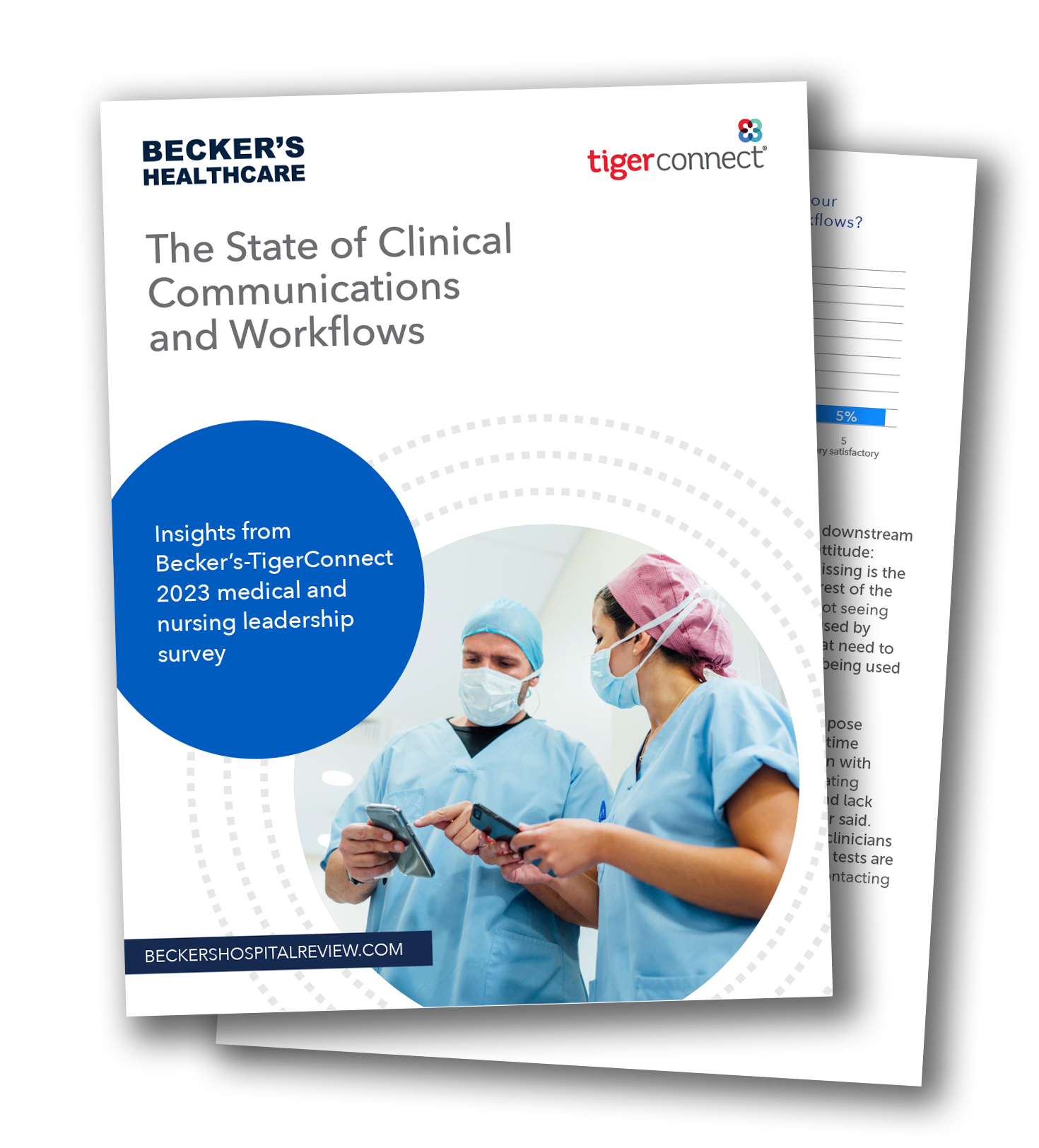Home / Blog /
Top 3 Communication Challenges Nurses Face

Top 3 Communication Challenges Nurses Face
Nurses are the beating hearts and caring faces of any medical facility. They are hands-on with patients more than any other caregiver. They initiate many key steps in clinical workflows. Do they have concerns about the state of nurse communication in their facilities? Based on research we commissioned with Becker’s Healthcare, a leading healthcare publisher, the answer is “yes.”
TigerConnect worked with Becker’s Healthcare to survey 105 clinicians about communication at their organization. The respondents were weighted toward senior medical and nursing staff with strong representation from physicians, surgeons, front-line nurses, and senior executives. The institutions represented included community hospitals, integrated health systems, academic medical centers, critical access hospitals, independent hospitals, rural hospitals, and other medical providers.
The report has many insights into the workflow challenges across healthcare organizations. Nurses have a unique position in those organizations and it’s worth looking more closely at what the survey discovered. Of the 105 survey respondents, 53 identified as nurses or nurse leaders. The results revealed that three communications challenges stand out specifically for nurses (percentages of those respondents citing them in parentheses):
- Communicating across departmental boundaries or outside the nursing unit (64%)
- Communicating across too many systems (60%)
- Poorly integrated systems and/or lack of interoperability across systems (51%)
Obviously, these issues are interrelated. It’s not hard to see how a lack of interoperability exacerbates the problem of multiple systems. Different departments may use different systems, multiplying the number of systems that have to be accessed to make a connection. Navigating all that with someone’s life in your hands is a highly stressful situation.
It’s a common nursing experience. A nurse needs to notify a provider about the status of a new patient. The nurse then has to reference the EHR notes or ED systems for care previously provided. Then, that nurse has to search for the number of the on-call provider and determine how that provider prefers to be contacted, such as via phone call, pager, or through an answering service. Sometimes, the on-call schedule is not up-to-date, or the provider never returns the call. When they do call back, the nurse has to be tracked down and may be too busy to answer, so they may miss the call and have to repeat the process.
This needless complexity has direct patient impact as well as creates stress for the nurse. Interoperability and communication challenges can delay care delivery, an effect that has cascading consequences on the clinical workflow. A delay in getting ahold of the right provider, for instance, further delays diagnosis and treatment, which has negative impacts on not only the patient but the nurse and the hospital as well.
Communicate the modern way
Read insights from 2023 TigerConnect-Becker’s medical and nursing leadership survey.
|
 |
Communication is the glue that holds clinical workflows together. Improving that communication is the foundation of the TigerConnect clinical communication and collaboration (CC&C) platform. Those improvements have been seen at more than 7,000 customer sites around the nation.
TigerConnect is a cloud-native clinical communication and collaboration platform that care teams can use to communicate with each other and patients through a single application. It is designed to work the way most people communicate today – with secure texting, voice, and video calls. TigerConnect integrates with many healthcare tools and systems – like your EHR, physician schedules, and physiological monitors. It also offers modules for scheduling, alarm management, and patient engagement functions directly from TigerConnect.
The TigerConnect platform can address nurses’ concerns. It will save them time and frustration, reducing the potential for burnout, especially as the healthcare industry continues to face a shortage of nurses. Using TigerConnect can save nurses up to 137 minutes per day by getting the right message to the right person at the right time, bringing in contextual information from integrated systems to accelerate care delivery. For patients, better communication leads to better outcomes. TigerConnect can also securely involve the patient in the communications flow to keep them updated on their care.
Now imagine the above scenario with TigerConnect. Role-based communication creates a seamless connection to whoever is on call. The nurse doesn’t have to search for who’s on call or for their number and doesn’t have to wait around for a callback. Clinicians can send secure messages about patient information, which speeds the process along for everybody as the workflow is built into the communication tool.
There is a better way
Nurses have a unique role in the healthcare industry. They interact with patients more than any other individual staff member. They are at the center of many clinical workflows. The TigerConnect-Becker’s survey gave them a chance to point out the communication challenges the healthcare industry is still facing today.
And what they’re saying is strong medicine. Many communication systems used today don’t interoperate. There are too many of them. They don’t function across departments.
Yet, healthcare leaders can respond by upgrading to a CC&C platform that works everywhere, connects staff securely, and saves time for nurses, doctors, and support staff. The ultimate beneficiaries will be the patients.
Download The State of Clinical Communications and Workflows survey report here.
Nikki Manuel, MSN, RN-BC, Clinical Consultant
Nikki Manuel, MSN, RN-BC, is a Clinical Consultant at TigerConnect. With more than 20 years of post-acute, critical care, and nursing informatics experience, Nikki helps develop essential systems to improve clinical workflows.
Tags: clinical survey, clinical communication challenges, Clinical Communication and Collaboration, Healthcare Communication, Healthcare Technology, Clinical Communication, Clinical Workflows








